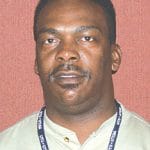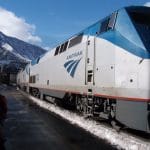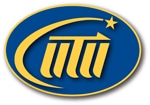A new year under the Railroad Unemployment Insurance Act for unemployment and sickness benefits begins July 1.
The maximum daily benefit rate payable remains at $66 in the new benefit year.
Benefits are normally paid for the number of days of unemployment or sickness over four in 14-day registration periods. Thus, the maximum benefits for biweekly claims will continue to total $660.
During the first 14-day claim period in a benefit year, benefits are payable for each day of unemployment or sickness in excess of seven, rather than four, which, in effect, provides a one-week waiting period.
Initial sickness claims must also begin with four consecutive days of sickness. However, only one waiting period is required during any period of continuing unemployment or sickness, even if that period continues into a subsequent benefit year. Claimants already on the rolls will normally not be required to serve another waiting period because of the onset of the new benefit year.
To qualify for railroad unemployment or sickness benefits in the benefit year beginning July 1, an employee must have had railroad earnings of at least $3,325 in calendar year 2010, not counting more than $1,330 for any month. Those who were first employed in the rail industry in 2010 must also have at least five months of creditable railroad service in that year.
Under certain conditions, employees who do not qualify in the new benefit year on the basis of their 2010 earnings may still be able to receive benefits beginning July 1.
Employees who received normal benefits in the benefit year ending June 30, might still be eligible for extended benefits.
Ten-year employees may be eligible for accelerated benefits, if they have rail earnings of at least $3,325 in 2011, not counting earnings of more than $1,330 a month.
Application forms for unemployment and sickness benefits may be obtained from railroad employers, UTU local or general committee offices, any Railroad Retirement Board (RRB) office, or the Railroad Retirement Board’s website at www.rrb.gov.
Applications for unemployment benefits may be filed on-line.
Since November 2010, claimants have been able to file biweekly claims for sickness benefits over the Internet as well. However, rail employees who miss work due to illness or injury still must file a paper form that serves as their initial application for sickness benefits.
To access Railroad Retirement Board online services, employees must first establish an RRB Internet Services account. For security purposes, first-time users must apply for a Password Request Code, which they will receive by regular mail in about 10 business days.
To do this, employees should click on “requesting a Password Request Code (PRC)” in the “Benefit Online Services Login” section of the www.rrb.gov home page.
Once employees establish their online accounts, they will be able to file their applications and biweekly claims for unemployment benefits as well as conduct other business with the RRB over the Internet.
Employees are encouraged to initiate an online account while still employed so the account is established if they ever need to use these or other select RRB Internet services. Employees who have already established online accounts do not need to do so again.
Claimants with questions about unemployment or sickness benefits should contact an RRB office by calling toll free at (877) 772-5772. Field office locations can also be found online at www.rrb.gov.





